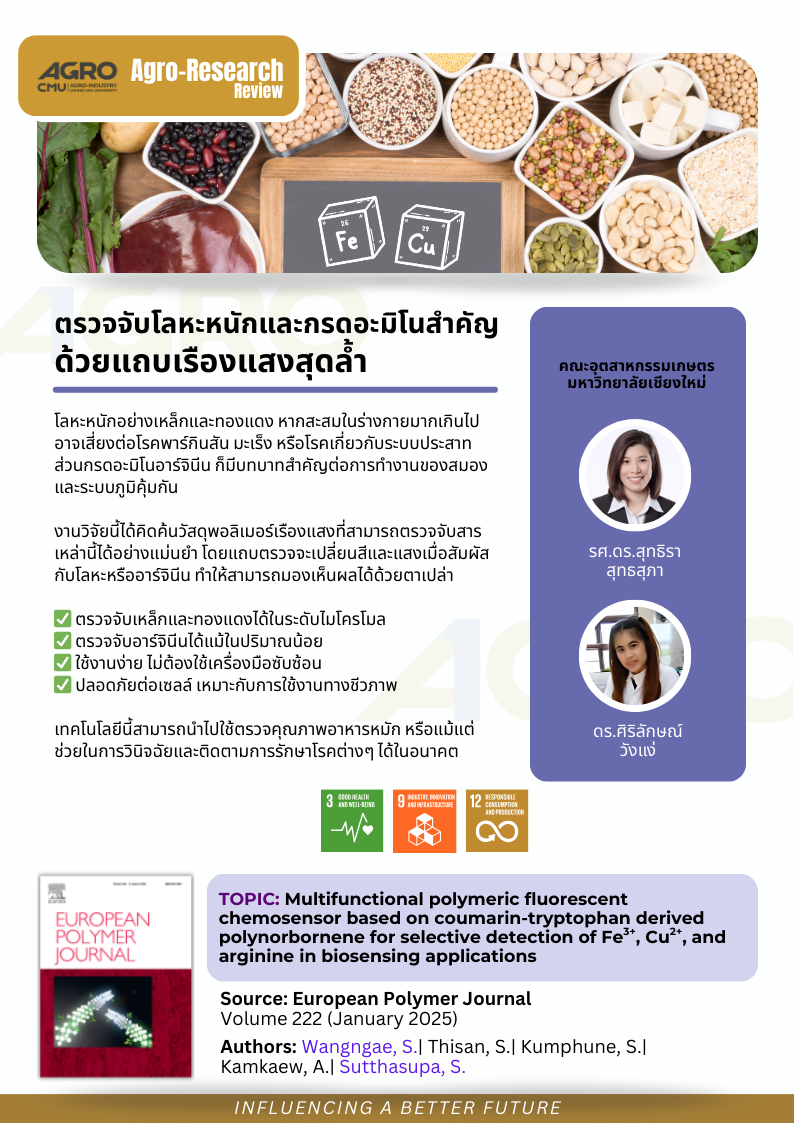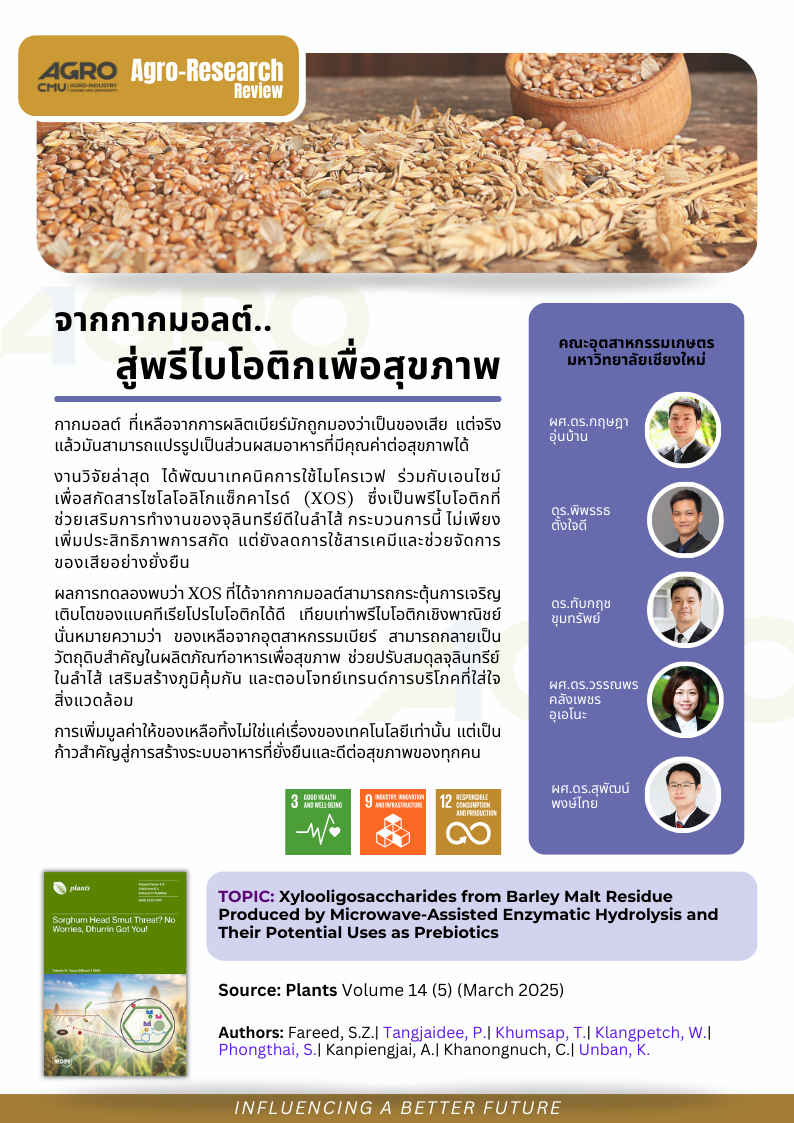
ตรวจจับโลหะหนักและกรดอะมิโนสำคัญด้วยแถบเรืองแสงสุดล้ำ
โลหะหนักอย่างเหล็กและทองแดง หากสะสมในร่างกายมากเกินไป อาจเสี่ยงต่อโรคพาร์กินสัน มะเร็ง หรือโรคเกี่ยวกับระบบประสาท ส่วนกรดอะมิโนอาร์จินีน ก็มีบทบาทสำคัญต่อการทำงานของสมองและระบบภูมิคุ้มกัน
งานวิจัยนี้ได้คิดค้นวัสดุพอลิเมอร์เรืองแสงที่สามารถตรวจจับสารเหล่านี้ได้อย่างแม่นยำ โดยแถบตรวจจะเปลี่ยนสีและแสงเมื่อสัมผัสกับโลหะหรืออาร์จินีน ทำให้สามารถมองเห็นผลได้ด้วยตาเปล่า
- ตรวจจับเหล็กและทองแดงได้ในระดับไมโครโมล
- ตรวจจับอาร์จินีนได้แม้ในปริมาณน้อย
- ใช้งานง่าย ไม่ต้องใช้เครื่องมือซับซ้อน
- ปลอดภัยต่อเซลล์ เหมาะกับการใช้งานทางชีวภาพ
เทคโนโลยีนี้สามารถนำไปใช้ตรวจคุณภาพอาหารหมัก หรือแม้แต่ช่วยในการวินิจฉัยและติดตามการรักษาโรคต่างๆ ได้ในอนาคต
--
Advanced Fluorescent Strip for Detecting Heavy Metals and Essential Amino Acids
Heavy metals like iron (Fe³⁺) and copper (Cu²⁺), when accumulated excessively in the body, can increase the risk of Parkinson’s disease, cancer, and other neurological disorders. Meanwhile, the amino acid arginine plays a crucial role in brain function and immune system regulation.
This research has developed a fluorescent polymer material capable of accurately detecting these substances. The test strip changes color and fluorescence when exposed to metal ions or arginine, allowing results to be seen with the naked eye.
- Detects iron and copper at micromolar levels
- Detects arginine even in small amounts
- Easy to use without complex equipment
- Biocompatible and suitable for biological applications
This technology can be applied to assess the quality of fermented foods and may even support disease diagnosis and treatment monitoring in the future.
--
Topic: Multifunctional polymeric fluorescent chemosensor based on coumarin-tryptophan derived polynorbornene for selective detection of Fe3+, Cu2+, and arginine in biosensing applications
Authors: Wangngae, S.| Thisan, S.| Kumphune, S.| kamkaew, A.| Sutthasupa, S.
Abstract:
In this study, we synthesized a polymeric fluorescent chemosensor probe using Coumarin (Cou) and Tryptophan (Trp)-derived norbornene (NB) monomers through Ring Opening Metathesis Polymerization (ROMP). The combination of Cou and Trp influenced fluorescence selectivity and quenching efficiency. The NB-Cou-Trp monomer and the Poly-Cou-Trp polymer fluorescent probes exhibited multifunctional chemosensor properties, displaying fluorescence on-off-on characteristics. These probes selectively detected Cu2+ and Fe3+ ions, and subsequently, their Cu2+ complex showed selectivity for Arginine (Arg) in DMF solution. The detection limit (LOD) for Cu2+ was determined to be 0.232 µM for the monomer and 0.114 µM for the polymer. When complexed with Cu2+, the LOD for Arg was 0.233 µM for the monomer. In test strip form, this probe exhibited an on–off-on fluorescence phenomenon after adding metal and arginine, respectively, with colorimetric changes under different light lamp irradiations, allowing for discrimination of the presence of Cu2+ and Arg. Cell cytotoxicity tests in various cell types confirmed biocompatibility, suggesting potential for l-arginine biosensing detection in several fermented food products, diagnosis, prognosis, and treatment monitoring of many diseases, including cancer.
Keywords: Arginine recognition; Coumarin-based iron-copper chelator; Multi-response; On–off-on sensor; Test strips; Tryptophan
View at publisher: https://www.sciencedirect.com/science/article/pii/S0014305724008875?pes=vor&utm_source=scopus&getft_integrator=scopus
#อกมช. #agrocmu #CMU






